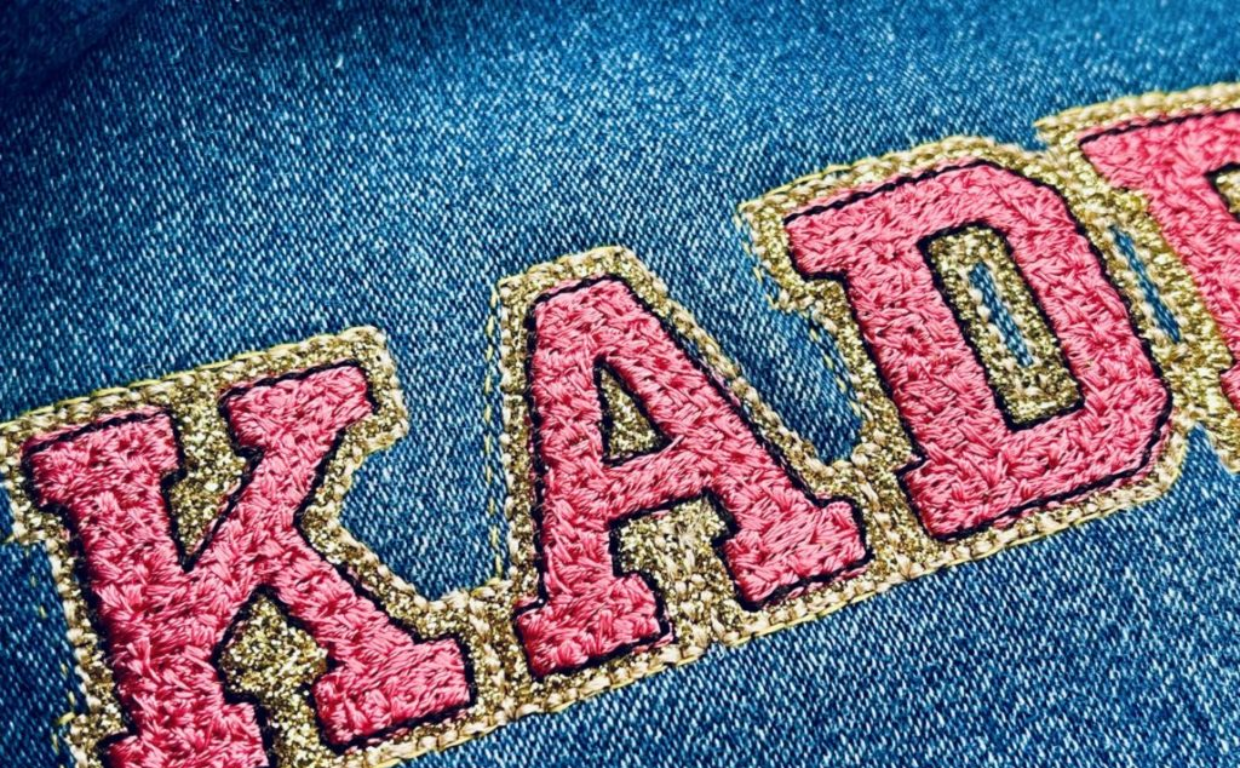Understanding the Nature of Chenille Applique
Chenille applique is a unique embroidery style that uses velvety yarns to create plush, three-dimensional designs. This textured technique is often used in varsity jackets, team uniforms, and high-end fashion due to its luxurious appearance and tactile appeal. However, its intricate texture and fabric composition make it delicate and susceptible to damage if not properly maintained.
The base fabric for chenille is usually felt, wool, or cotton blends, which are prone to shrinking or warping under extreme conditions. Likewise, the yarns themselves are soft and can unravel with rough handling or harsh detergents. Understanding these fabric dynamics is crucial before deciding how to clean or store a chenille design.
Another important factor is the method of application—some chenille appliques are sewn with satin stitches around the edges, while others are glued, increasing the risk of peeling if not cared for properly. Recognizing how your applique is affixed will help you choose the correct washing and maintenance technique.
Additionally, exposure to sunlight or high humidity can degrade chenille over time. Fading colors, stiffness, or mildew may result if garments are left in unsuitable conditions. That’s why routine care and thoughtful storage are vital to preserving their integrity.
Lastly, manufacturers often provide care labels with chenille items, which should be strictly followed. These guidelines are specific to the type of fabric and thread used, and adhering to them ensures the longevity of the design.
Washing and Drying Tips for Longevity
When it comes to washing chenille applique garments, hand-washing is the safest method. Use cold water and a mild detergent that’s free from bleach or strong chemicals. Gently swish the garment in the water rather than scrubbing it, which could dislodge yarns or distort the fabric shape.
If machine washing is unavoidable, use a mesh laundry bag and select the delicate cycle. Always turn the garment inside out before placing it in the machine to protect the design from friction with other clothes. Additionally, avoid mixing with rough-textured garments like denim that could damage the yarns.
Avoid using tumble dryers for chenille garments. The heat and tumbling action can shrink the base material and pull fibers from the yarn. Instead, lay the garment flat on a clean towel and reshape it gently while it dries. Hanging chenille garments can cause stretching due to their weight when wet.
Never wring out the fabric or press it with high heat. If ironing is necessary, use a protective cloth and the lowest possible heat setting. Some people even use a steamer to gently remove wrinkles without touching the yarns directly.
Lastly, spot cleaning should be your first option when dealing with small stains. Blot the area with a damp cloth and mild soap instead of submerging the entire item in water, which limits wear and tear from frequent washing.
Storing Chenille Applique the Right Way
Proper storage is essential for preserving the soft, textured appeal of chenille applique. Always clean your garment before storing it, as body oils, food residues, or dirt can set into the fabric over time and attract pests or mildew.
Store the item flat and folded in tissue paper rather than hanging it, which can cause the fabric to stretch and deform. If you must hang it, use padded hangers to support the garment evenly and prevent the shoulders from sagging.
Avoid plastic storage bags for long-term storage. These can trap moisture and lead to mildew or yellowing of the fabric. Instead, opt for cotton garment bags or breathable boxes to allow airflow and reduce moisture retention.
Keep your storage space dry, dark, and cool. Excessive light can fade the yarn, and heat or humidity can weaken the glue or threads holding the applique in place. Using silica gel packets in storage boxes is also a good idea to absorb moisture.
Lastly, check on your stored garments periodically—especially if they’re seasonal pieces like varsity jackets. This allows you to refold them, air them out, and ensure that no pests or mold have begun to affect the material.
Preventing Damage During Wear
Even the best-made chenille applique designs can be damaged if worn carelessly. Avoid wearing chenille pieces in situations where the fabric could snag on rough surfaces or be exposed to food stains, heavy sweating, or rain.
Backpacks, seatbelts, and jewelry are common culprits that rub against applique designs and wear down their texture. Try to wear chenille garments over inner layers and minimize external friction as much as possible.
Avoid sitting or lying down on rough surfaces like concrete or brick while wearing chenille outfits, as the texture can catch and tear. Similarly, take care when removing or adjusting these garments to prevent unnecessary pulling.
It’s also important to consider climate. Rain and humidity can cause swelling or mildew if the applique absorbs too much moisture. In such weather, carrying an outer jacket or umbrella can help protect your chenille design.
Lastly, if you notice any loose threads or lifting edges, repair them promptly. A small unravelled section today can become a major tear tomorrow if left unchecked, especially with chenille’s looped structure.
Quick Repair and Touch-Up Methods
Chenille applique repairs can be tricky due to the plush nature of the yarn. For minor yarn pulls, gently push the thread back into place using a blunt needle or crochet hook from the reverse side of the fabric.
If a section of the applique has started to peel or detach, use a fabric-safe adhesive to tack it back down. Apply a small amount with a toothpick and press gently with a cloth. Avoid liquid glue that could seep into the threads and stiffen the design.
Loose satin stitches can be re-sewn using matching thread and a small embroidery needle. Work slowly and follow the original stitch direction to maintain a consistent look. If you’re unsure, consult a local tailor or embroidery expert.
Color fading can be touched up with fabric-safe markers, especially on areas like lettering or outlines. Always test on a hidden area first to ensure the color matches and doesn’t bleed into surrounding threads.
For larger issues like holes or missing yarn patches, it’s best to contact a professional embroidery service that specializes in chenille repair. DIY attempts on extensive damage can sometimes worsen the problem if the fabric base is already weakened.
Long-Term Preservation and Best Practices
Over time, even the best cared-for chenille applique items will show signs of aging. However, by following long-term preservation techniques, you can significantly extend their lifespan and keep them looking fresh.
Rotate your wear. Avoid wearing the same chenille design frequently, especially during rough activities or harsh weather. Giving garments rest between wears allows the fabric to breathe and regain its shape.
When traveling, roll the garment with protective tissue paper rather than folding it sharply. This reduces creasing and helps maintain the raised yarn texture. Use a hard case for extra protection.
Regularly brush chenille applique with a soft lint brush to keep it clean and vibrant. Avoid using lint rollers with adhesive, which can pull out fibers and ruin the texture.
If the design is part of a collectible or limited-edition item, consider framing or displaying it in a dust-free, UV-protected case. This is common for vintage varsity patches or designer items with sentimental or financial value.
Finally, always handle your chenille garments with clean hands and avoid applying perfume or lotions directly onto the fabric. The oils and alcohol can degrade the yarn quality over time and leave permanent marks.

